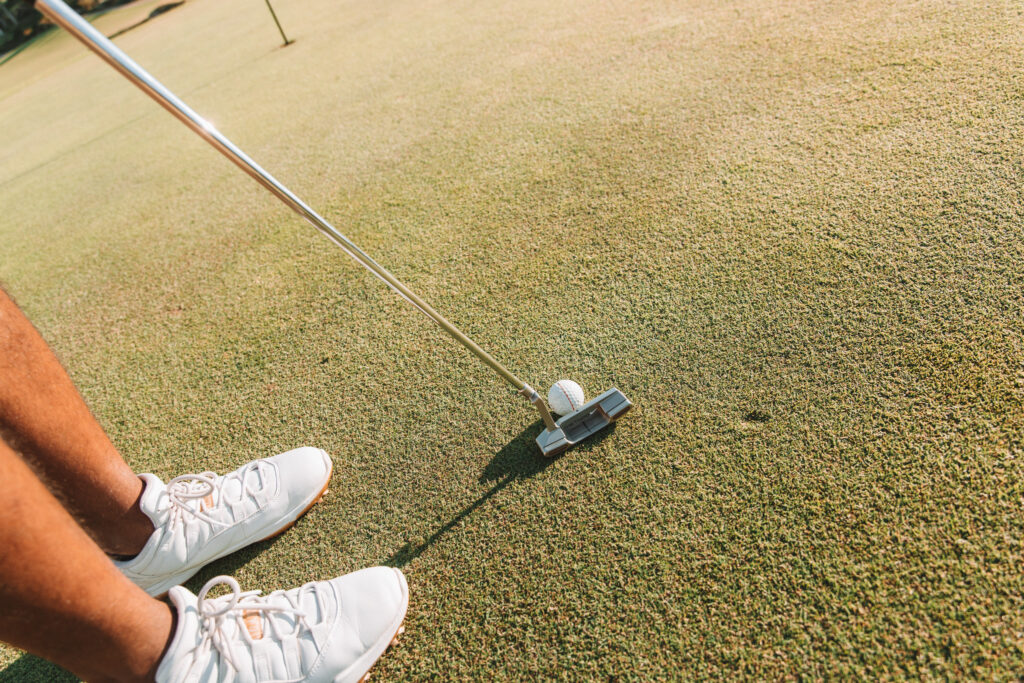How to Make More Short Putts: The Best Drills for Inside 6 Feet
Missing short putts is one of the most frustrating things in golf. You do all the hard work getting to the green, only to walk away with a bogey or worse from a short distance. But the good news is, with the right drills and practice habits, you can dramatically improve your short putting and start turning those nervy 4-footers into tap-ins.
This guide breaks down how to build confidence inside six feet by focusing on alignment, grip, technique, and simple, effective drills.

Why Short Putts Matter More Than You Think
Inside six feet is where rounds are saved or lost. Most missed short putts don’t come from bad greens or unlucky breaks, they come from a lack of trust, poor alignment, or rushed execution.
When You Miss Short Putts:
- You lose confidence.
- You add pressure on the next hole.
- You let strokes slip away needlessly.
When You Make More Short Putts:
- Your entire round feels easier.
- You build positive momentum.
- You gain a psychological edge over your playing partners.
The goal is to take the mystery and nerves out of short putting. Let’s break down how.

Step 1: Start with the Fundamentals
1. Grip
- Hold the putter lightly (about a 4 out of 10 pressure).
- Use a grip style that feels natural (conventional, cross-handed, claw, etc.).
- Keep your hands quiet and stable through the stroke.
2. Setup and Alignment
- Eyes should be directly over or just inside the ball.
- Feet, hips, and shoulders square to the target line.
- Ball position just forward of centre.
- Make sure the putter face is square at address, this is the most important factor in short putt success.
3. Stroke Mechanics
- Keep your stroke simple and compact.
- Focus on pendulum motion: rock the shoulders, don’t flip the wrists.
- Keep your head still until well after the ball is gone.
Step 2: Drills That Build Confidence Inside 6 Feet

Drill 1: The Circle Drill
This classic is popular for a reason.
How to Do It:
- Place six to eight balls in a circle around the hole, all about 3 feet away.
- Try to make every putt in a row.
- If you miss one, start over.
Why It Works:
- Builds pressure and focus.
- Forces you to get comfortable with different angles.
- Helps you commit to every stroke.
Drill 2: The Gate Drill
Helps you deliver the putter square through impact.
How to Do It:
- Set up two tees just wider than your putter head.
- Putt through the gate without touching the tees.
- Start with short putts, then move to longer ones.
Why It Works:
- Improves stroke path.
- Builds awareness of face control.
- Develops trust in your mechanics.
Drill 3: The Chalk Line Drill
Perfect for practicing alignment and straight strokes.
How to Do It:
- Snap a chalk line on a flat section of green (or use a string).
- Set the ball on the line and align your putter face to it.
- Stroke the ball and keep it rolling along the line.
Why It Works:
- Trains your eyes to see straight.
- Builds alignment consistency.
- Reinforces the feel of a square stroke.
Drill 4: Eyes Closed Drill
Teaches you to feel the stroke, not guide it.
How to Do It:
- Hit 5 short putts with your eyes closed (start at 3 feet).
- Focus on tempo and feel, not results.
- Then open your eyes and repeat.
Why It Works:
- Builds awareness of your rhythm.
- Trains you to trust your stroke under pressure.
Drill 5: 1-2-3 Drill
Simulates increasing pressure with progressive putts.
How to Do It:
- Place three balls at 3, 4, and 5 feet.
- Make all three putts in order.
- If you miss any, start again.
Why It Works:
- Mimics pressure situations.
- Trains focus and consistency as the distance increases.
Step 3: Practice With a Purpose
Quality Over Quantity
Don’t just bang 50 short putts and call it practice. Make every stroke matter.
- Stick to a few focused drills.
- Track your success rate.
- Practice like you’re playing.
Use a Pre-Shot Routine
Bring your full routine into every practice putt:
- Visualise the ball going in.
- Take a calming breath.
- Commit to your target and make the stroke.
Stay Calm Under Pressure
Short putts can create anxiety. Fight that with habits:
- Practice under small amounts of pressure.
- Keep your head still and breathe slowly.
- Trust your technique, don’t overthink it.

Final Thoughts: Turn Short Putts Into Easy Points
Making short putts isn’t about magic. It’s about preparation, trust, and smart practice. The more familiar you become with your stroke, your alignment, and your feel, the easier these putts will feel on the course.
Start small:
- Pick one or two drills that suit you.
- Stick with them until you see progress.
- Don’t forget to use your pre-shot routine, even in practice.
With just a little focused effort, you’ll gain the confidence to stand over every short putt knowing it’s going in. And from there, your scores are bound to drop.












